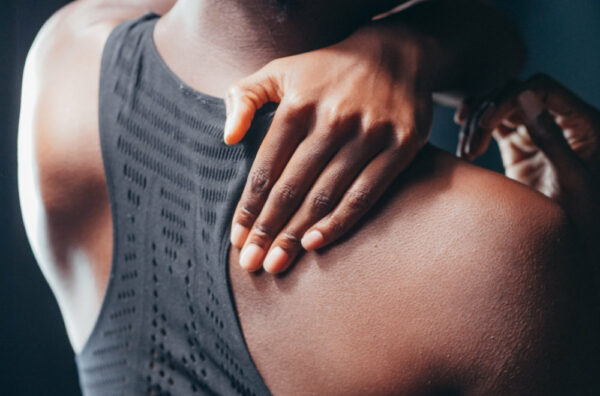 Now that spring is just around the corner, many of us are in full swing with our workouts. Hopefully, your workouts have gradually increased in intensity and include adequate stretching, rest and a healthy diet to reduce the chance of injury. Unfortunately, in today’s fast paced, high stress world, we do not always have the time or energy to do things right or adequately recover from intense activity. This can lead to an acute injury which can become a chronic condition.
Now that spring is just around the corner, many of us are in full swing with our workouts. Hopefully, your workouts have gradually increased in intensity and include adequate stretching, rest and a healthy diet to reduce the chance of injury. Unfortunately, in today’s fast paced, high stress world, we do not always have the time or energy to do things right or adequately recover from intense activity. This can lead to an acute injury which can become a chronic condition.
Almost all of us have experienced an injury that disrupted our workout routine. Typically, individuals will seek out medical attention for the worst of these injuries (broken bones, torn ligaments, etc.), but not for minor sprains and strains. Ice, anti-inflammatories, and discontinuing workouts was the self-prescribed medicine for these injuries. Sometimes, this could mean days, weeks or months of frustration, because even after the pain was gone, the injury site just never felt the same again.
Why do my injured muscles always feel tight?
Muscles become shortened due to injury, acute trauma or chronic tension that causes micro-tears within the soft-tissue fibers. With an injury, usually more than one muscle is involved (agonist, synergist, antagonist). The body lays down fibrous adhesions between these muscles which restricts the muscles ability to slide freely past one another. The scar tissue that forms at the injury site is less elastic and more fibrotic than normal tissue and also causes muscles to gradually lose their stretch component. Short tight muscles are weaker, more prone to injury, and limit your body’s range of motion. This also disrupts joint mechanics and physically reduces the tissues length, hence causing the muscles to feel tight.
Shortened muscles and tightened joints all combine to impair coordination, reduce power, and result in further injuries. This cycle repeats itself until the adhesions are treated/released.
Why do adhesions (scar tissue) form?
Our bodies protect us from further damage by sending out pain signals and repair those damaged areas with scar tissue, otherwise known as adhesions. Specifically, injuries to the soft-tissue (ligaments, muscles, fascia and nerves) result in inflammation and swelling of the surrounding tissue. This inflammation causes the body to lay down scar tissue (cross fibers on the tissue) generally within 2 days of an acute injury to help protect the affected area. While the adhesions do help prevent further immediate injury, they also restrict range of motion, reduce circulation and muscle strength, inhibit nerve function, require an additional expenditure of energy, and usually result in the production of more scar tissue.
Can I stop adhesions from forming?
The short answer is no. Adhesions are our bodies “band-aids”. It would be almost impossible to live a life without injury, no matter how minor. All it takes is one hard workout without a proper recovery.
Can stretching or massage breakdown the adhesions?
Stretching daily should be a key component of exercise. It helps increase circulation and keeps your muscles fluid and elongated, but generally it cannot breakdown scar tissue. Scar tissue is several times stronger than normal healthy tissue. During regular stretching, the first tissue that elongates is the healthy tissue, not the scar tissue. Typically, the amount of force that is required to breakdown the scar tissue during stretching will injure healthy tissue long before adhesions are broken down.
Massage is also a helpful tool in improving circulation and promoting the relaxation of fatigued and tight muscles, but it is not structured enough to breakdown adhesions. For example, most massage therapists treat hamstring injuries as a whole instead of addressing the individual muscles within the hamstring (semitendinosus, seminimembranosus, biceps femoris long head and biceps femoris short head). Since no two injuries are exactly alike, every aspect from the cause to the symptom needs to be addressed, not just the overall muscle group.
Is there a non-evasive medical treatment that removes adhesions?
Yes, Active Release Techniques or ART® is a patented, state-of-the-art therapy that corrects muscular and soft-tissue problems caused by adhesion formation. ART® is an active form of therapy that requires patient participation to locate not just the symptoms but also the underlying cause of the dysfunction. A certified ART® practitioner finds the injured tissue and physically works it back to its normal texture, tension and length using various hand positions and soft-tissue manipulation methods. There are over 300 treatment protocols for injuries to the spine, and upper and lower extremities.
What are the benefits of receiving Active Release Techniques® ?
Certified ART® practitioners have over a 90% success rate of permanent relief from the pain and resulting problems in movement and tissue performance. By restoring proper muscle function and movement, the body is able to perform at its most efficient level and use less energy. ART® improves performance by increasing range of motion, strength, endurance, and reaction times. It also increases circulation which facilitates tissues repair. There are hundreds of certified ART® practitioners is the United States and Canada. You can verify their credentials by contacting 1-888-396-2727 or by visiting www.activerelease.com. It takes several years to become proficient in ART®, so choose your doctor wisely.
As previously printed in Houston Sports News
